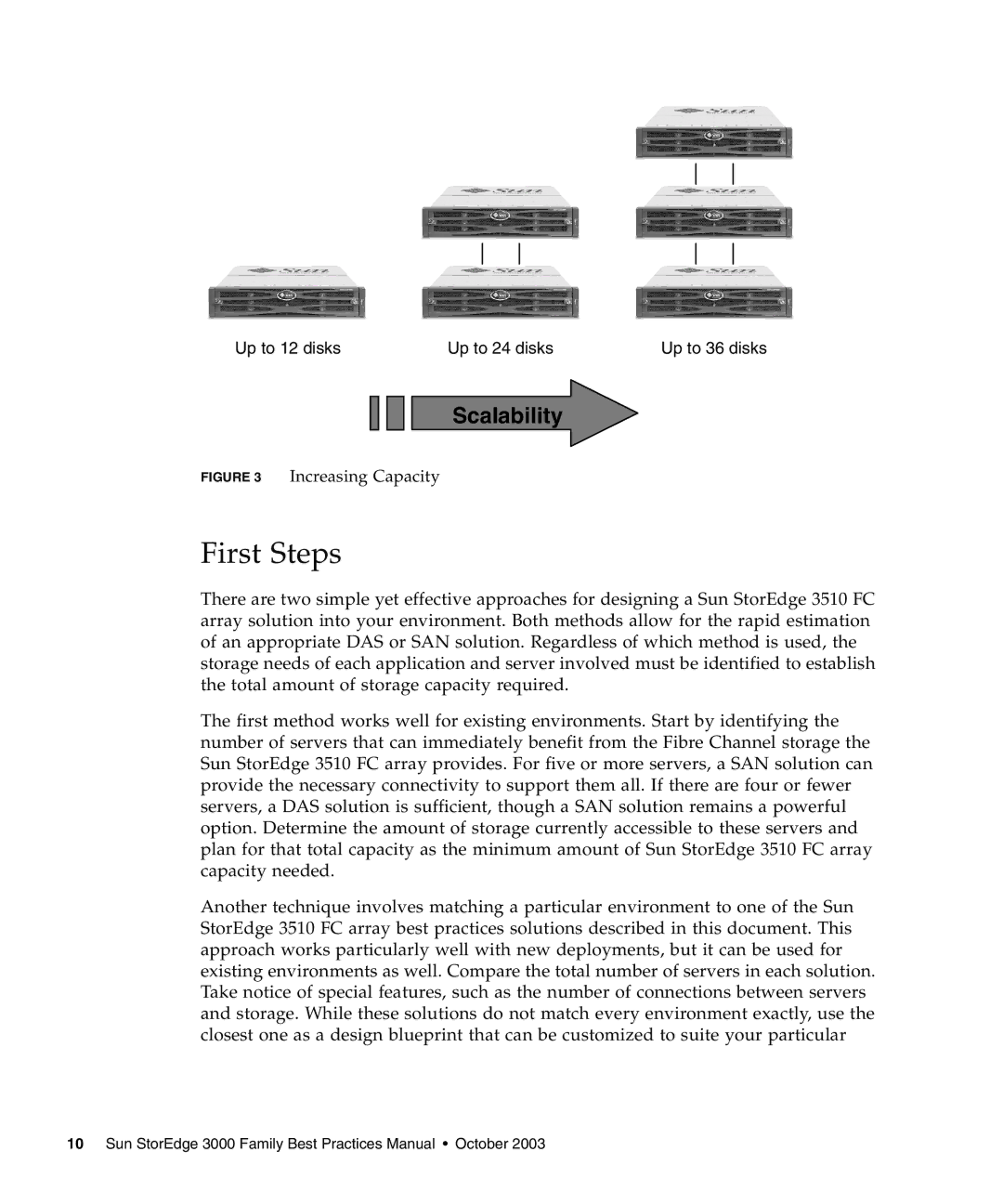
Up to 12 disks | Up to 24 disks | Up to 36 disks |
Scalability
FIGURE 3 Increasing Capacity
First Steps
There are two simple yet effective approaches for designing a Sun StorEdge 3510 FC array solution into your environment. Both methods allow for the rapid estimation of an appropriate DAS or SAN solution. Regardless of which method is used, the storage needs of each application and server involved must be identified to establish the total amount of storage capacity required.
The first method works well for existing environments. Start by identifying the number of servers that can immediately benefit from the Fibre Channel storage the Sun StorEdge 3510 FC array provides. For five or more servers, a SAN solution can provide the necessary connectivity to support them all. If there are four or fewer servers, a DAS solution is sufficient, though a SAN solution remains a powerful option. Determine the amount of storage currently accessible to these servers and plan for that total capacity as the minimum amount of Sun StorEdge 3510 FC array capacity needed.
Another technique involves matching a particular environment to one of the Sun StorEdge 3510 FC array best practices solutions described in this document. This approach works particularly well with new deployments, but it can be used for existing environments as well. Compare the total number of servers in each solution. Take notice of special features, such as the number of connections between servers and storage. While these solutions do not match every environment exactly, use the closest one as a design blueprint that can be customized to suite your particular
10 Sun StorEdge 3000 Family Best Practices Manual • October 2003
